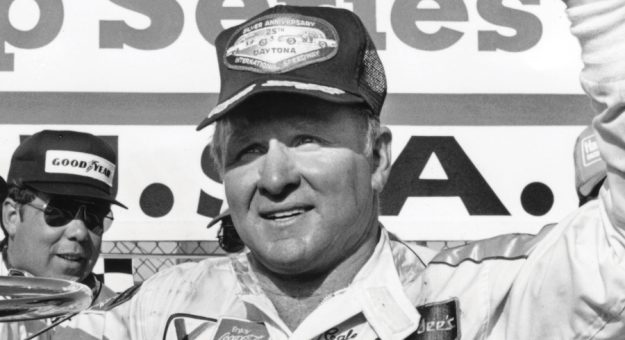DAYTONA BEACH, Fla. — It was way back in 1983 that a trip to the 25th Daytona 500 turned into an annual pilgrimage for this writer.
Since that time, we’ve seen many great things with these tired eyes, met some even greater people who ultimately became good friends, and heard some of best tales told by the greatest storytellers who ever sat in a press box, or on a barstool.
Countless computers, some archaic by today’s standards, were used to chronicle great triumphs by the heroes of NASCAR. These were names that were bigger than life to a Indiana kid who had grown up in the shadow of the Indianapolis 500.
Long before 1979 when CBS became the first network to present live, flag-to-flag coverage of the world’s biggest stock car race, ABC usually aired the final third to last half of the Daytona 500 live. Voices such as Bill Fleming, Keith Jackson, Jackie Stewart and SPEED SPORT’s own Chris Economaki called the race on ABC.
They were familiar voices on the family television as ABC covered many NASCAR races on “Wide World of Sports” – one of the great sports anthologies in television history.
Back then, the first part of the race would be aired before Wide World would switch to several other sporting events, such as ski jumping, figure skating or a variety of other sports.
But the highlight was always the conclusion of the Daytona 500.
That’s how we saw Richard Petty become “The King.” It’s also how race fans saw David Pearson finally win his first Daytona 500 in 1976 in a side-by-side battle with Petty before the two hooked each other coming out of the final turn on the final lap.
Both cars crashed, but Petty’s car was stuck in the infield grass, just a few hundred feet from the checkered flag. Pearson’s mangled No. 21 Wood Brothers Racing Mercury limped under the checkered flag, and he won the race.
Back in those days, they didn’t play college basketball on Sundays, so the Daytona 500 was a nice diversion from watching an NBA game or a National Hockey League game on television.
Those were the days before cable, with only three networks and one or two independent stations from which to choose.
Upon graduation from Indiana University in 1982, it was off to the South to continue a career as a sportswriter. In addition to covering high school sports, Michael Jordan and the other great star basketball players in the Atlantic Coast Conference, the NASCAR beat was all mine.
So, in February 1983, I made the trip from North Carolina to Daytona Beach, Fla., for my first Daytona 500.
Pulling into Daytona Int’l Speedway through the turn-four tunnel for the first time was an incredible experience. Having been to Indianapolis Motor Speedway on numerous occasions, Daytona was so much different.
You could see the high banks and the sea gulls flying overhead as NASCAR stock cars flirted with 200 mph for the first time during Daytona 500 qualifying.
Cale Yarborough, driving the No. 28 Hardee’s Chevrolet Monte Carlo owned by Harry Ranier, was the first driver to top 200 mph at Daytona. However, Cale lost control on his second timed lap, his car flipped onto its roof, landed back on its wheels and came to a stop inside turn four.
The car was destroyed, and Ranier’s team did not have a backup for Yarborough to race. Thus, the team had to scramble to find a replacement and eventually located a Hardee’s restaurant displaying a Pontiac Le Mans painted like the No. 28 and that was being used for promotional purposes.
That car was brought to the track and restored to racing condition, with Yarborough starting it from the eighth position.
In those days, Speedweeks was an endurance contest – a test to see how many stories could be reported and cranked out on just a few hours of sleep because of the entertainment temptations one could experience at night.
The events may have happened at the track, but the stories were often learned from the tales of the barstool — something that is lost today.
Back then, drivers, team members, NASCAR officials and media members all stayed in hotels. There were no driver/owner motorhomes. Everybody saw everybody else away from the tracks and relationships were built.
Yarborough was the story that began Speedweeks and he put an exclamation point on it by winning the 1983 Daytona 500 in what was basically a show car.
The race began at 12:15 p.m. and was over before 3:30 p.m., providing time to knock out four stories and still have time to head to dinner by 7 or 8 p.m. and enjoy one last night at some of Daytona’s famous – and infamous – establishments.
The drive back to North Carolina on Monday seemed longer than the drive down. It always seemed that way for some reason.
Forty-one years later, we journeyed to the Daytona 500 for the 36th time, having missed a few years along the way.
While the structure of Speedweeks is different, the drama is the same and those old memories will never fade.
